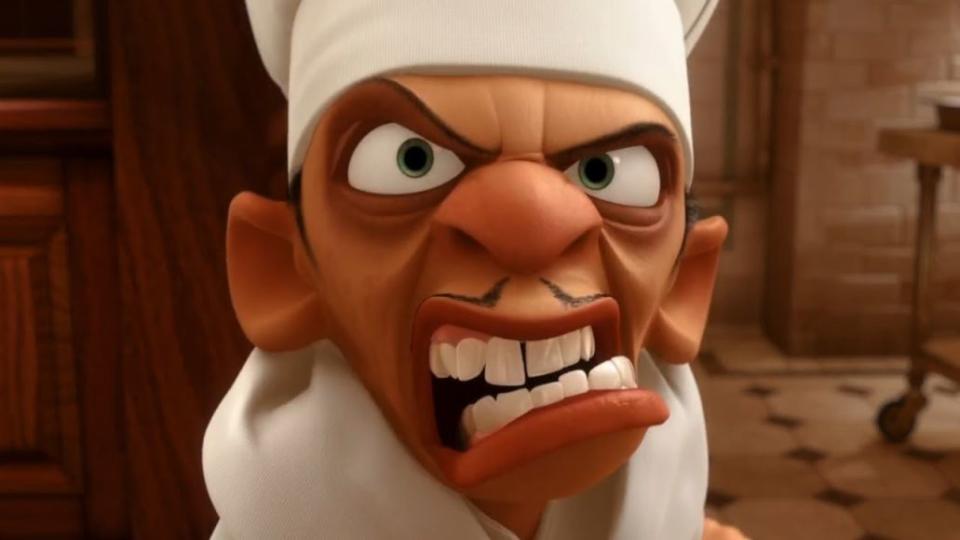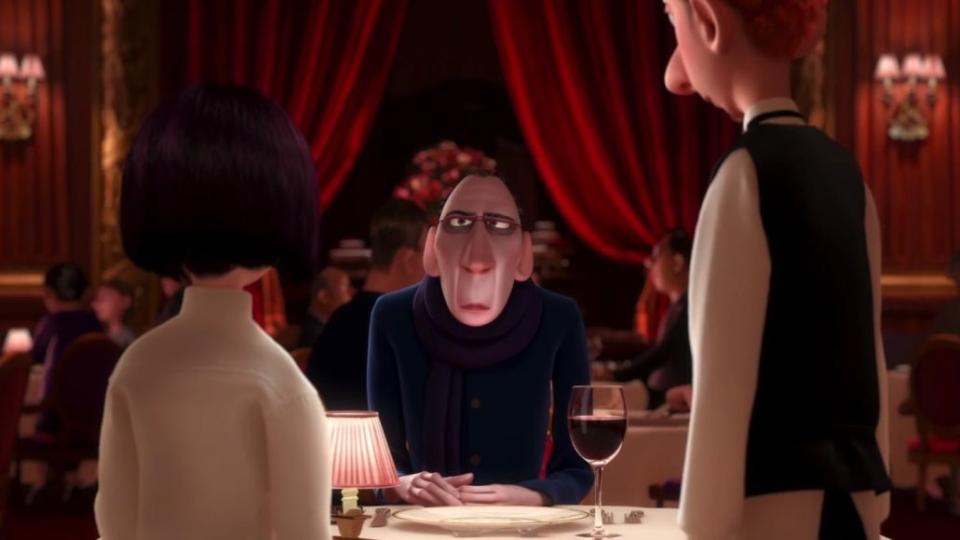15 Years of Ratatouille: How Its Portrayal of an Artist’s Journey Was Pixar at the Height of Its Powers
- Oops!Something went wrong.Please try again later.
The post 15 Years of Ratatouille: How Its Portrayal of an Artist’s Journey Was Pixar at the Height of Its Powers appeared first on Consequence.
Amongst many odd and controversial moments, a backhanded remark caused a small uproar at this year’s Oscars: When introducing the award for Best Animated Feature Film, the show’s writing staff included a joke that suggested animated films are for kids to watch “over and over and over,” with presenter Naomi Scott then adding that “some parents know exactly what we’re talking about.”
While there is certainly some truth to the idea of kids exclusively latching onto animated films, director Phil Lord put it best when he tweeted “Super cool to position animation as something that kids watch and adults have to endure.” Indeed, many in the animation field expressed disappointment at the idea that animated films only exist for these “formative moments” for children, diminishing their overall value.
Super cool to position animation as something that kids watch and adults have to endure
— Phil Lord y Betancourt (@philiplord) March 28, 2022
What the Oscars joke fails to consider is that animated movies are a unique opportunity for filmmakers to create with the fullest scope of their imaginations, to offer stories that cannot be replicated in a live-action production, and to create visual and cinematic ideas that push far beyond the novel and into a surprisingly profound space — one that people of all ages can appreciate. In other words, great art can come from anywhere, in any form, and can reach anyone with an open mind.
These principles are at the core of Pixar’s eighth film, Ratatouille, which celebrates its 15-year anniversary today (June 29th). Sure, Ratatouille’s premise has always been a bit absurd: a food-loving rat named Remy (voiced by Patton Oswalt) is separated from his colony and winds up cooking at the finest restaurant in Paris. But throughout the film is a universal message that hasn’t lost its potency, even after 15 years: Anyone can cook.
Pixar films rarely miss when it comes to their thematic thesis statements — this is a studio that has sought to represent the largest human emotions in imaginative, nuanced ways, from the separation trauma reflected in Finding Nemo to the toxic family dynamics of The Incredibles. But what makes Ratatouille’s message so remarkable is its fearlessness in approaching art and our society’s attitudes around it.
Though the film doesn’t lean as heavily into the fraught capitalist commentary and iconography of The Incredibles (also helmed by Ratatouille’s director, Brad Bird), it is indeed a smartly-constructed argument towards dismantling the classism surrounding art, and it’s a film that gave way to one of Pixar’s most courageous eras of storytelling… so far.
One of the reasons Ratatouille quickly stood out from the pack was its passionate, wildly unique protagonist: Remy the rat. From the first few frames of the film, which depicts Remy hurling himself and a book out of a window, we’re immediately thrust into the high-stakes circumstances of his life. This is a rat who is not like other rats, a young mind with the capacity to not just understand humans, but to echo their philosophical ideals. “Change is nature… the part that we can influence,” says Remy halfway through the film to his father, demonstrating his profoundly optimistic point of view.
But we latch onto Remy so quickly because his passion is so clearly on display — his poetic, enthusiastic nature is dismissed by nearly everyone in the film, and yet, Remy’s persona as an artist is instantly recognizable and endearing to the audience. The film’s animators, of course, do a brilliant job of reflecting so much passion and emotion in such a small creature, finely tuning the realistic details while combining a humanistic, wholly authentic approach to their rat protagonist.
On the other hand, Ratatouille’s antagonist, the volatile Chef Skinner, is another unique approach that begins to hammer in the film’s subtle political and artistic commentary. There are a few epic touches from Bird and voice actor Ian Holm that make the very, very short Skinner feel larger than life: Holm’s aggressive, loose-cannon bark creates a definable threat to the film’s central characters, and his psychological meltdown at the hands of a rat is both hilarious and concerning.
But positioning Skinner as Chef Gusteau’s illegitimate successor, and having him be the catalyst for a long line of pre-packaged, mass-produced frozen foods in Gusteau’s name, is a strong, dynamic choice. From the beginning of the film, we’re introduced to Gusteau’s inclusive values and his quest to bring fine dining to the masses — or rather, bring the masses to fine dining via the “anyone can cook” ethos. Using microwaveable food with embarrassing branding of Gusteau’s image as an antithesis to his singular vision is a great way of showing Skinner’s indifference to the very culture he cooks within, and it cements Bird’s point of food becoming stripped of its artistic qualities in order to function as sustenance for the lower class.

Ratatouille (Pixar)
It’s no secret that a film like Ratatouille presents a much stronger point of view than, say, its Pixar predecessor, 2006’s Cars. Brad Bird, of all directors, has been incredibly adamant throughout his career that animated films are intended for all audiences, and sectioning it off as a genre for kids does a great disservice to the art of filmmaking. In the same way that Remy, Linguini, Colette, and Gusteau rail against the idea that “haute cuisine” is reserved for the upper class, Bird uses Ratatouille as an example of powerful art that dismantles the preconceived notions of its own form.
But the film also exists in Brad Bird’s specific artistic ideology — though he’s denied it on occasions, several critics brought up The Incredibles as evidence of Bird endorsing a Rand-ian, objectivist agenda in his films, where the truly “exceptional” in society deserve to be unshackled by law and tradition.
Though this claim is certainly a simplification of Bird’s filmography and brings its own baggage of political discourse, it is fascinating to examine the role of the individual in his films and Ratatouille specifically. Investigating these ideas for Vox, Emily St. James concluded that Bird’s films “always posit that the exceptional should be allowed to express their talents to the best of their abilities — but only insofar as they can benefit society at large.”
While this is a more obvious theme in both Incredibles films, it exists in Ratatouille, too, positing that Remy’s inherent greatness, as well as his determination to evolve beyond the base values of his species, deems him worthy of cooking at a restaurant like Gusteau’s. But what’s interesting about Ratatouille is that, in the end, it’s still not enough. In the film’s falling action, Remy reveals that after they freed Skinner and the health inspector — who both witnessed the sea of rats operating in the kitchen on Remy’s behalf — Gusteau’s closes, the infamous food critic Anton Ego (Peter O’Toole) loses his credibility, and society moves on, deeming the high-dining establishment to be unfit and unworthy.
Rather than reflecting the Parisian public as changed individuals, willing to “risk something… in the discovery and defense of the new,” as Ego says in his climactic monologue, the world continues to turn, and Remy continues to exist as an outlaw. Only Ego, who helps function as a representation of society’s prejudices, is changed — demonstrating that to truly be in service of art, you must leave your preconceptions at the door.

Ratatouille (Pixar)
The film ends with a certain utopian ideal: Ego invests in an intimate bistro, with a menu presumably built by Remy and Colette. Not all is lost, and though not everyone will accept Remy, his tight-knit community is enough to fill his appetite for creation. It’s a lovely lesson about the pursuit of art, that even in the face of prejudice and an unequal world, the new and the novel will always have an audience.
It’s fitting that Pixar followed up Ratatouille with the wildly risky, socially-charged WALL-E. The success of Ratatouille, as well as the irresistible combination of the luxurious with the absurd, was undoubtedly a catalyst for stories that expanded beyond Pixar’s initial scope — both WALL-E and its successor Up are some of the most courageous and imaginative films that they’ve produced to this day, and helped cement Pixar as a studio that can lift impactful stories out of the most unexpected spaces.
As Pixar continues to roll out its new era, which includes resounding success on the more insular and intimate approaches to Luca and Turning Red, Ratatouille is an example of Pixar at the peak of its powers, demonstrating that its animators could turn a measly rat into a heroic protagonist and paint a deeply convincing portrait of pursuing art in the face of societal prejudice. Kids may latch onto the next animated film with fervor, but everyone can enjoy Ratatouille’s timeless message — great art can truly come from anywhere.
Ratatouille is streaming now on Disney+.
15 Years of Ratatouille: How Its Portrayal of an Artist’s Journey Was Pixar at the Height of Its Powers
Paolo Ragusa
Popular Posts
Paul McCartney Brings Out Dave Grohl, Bruce Springsteen at Glastonbury: Watch
Tommy Lee's Wife Reveals How the Drummer Broke His Ribs Leading Up to Mötley Crüe's Reunion Tour
David Spade Donates $5,000 to Burger King Employee's GoFundMe
Christian Bale Confirms "Kate Bush Stuff" Was Cut from Thor: Love and Thunder
Dave Chappelle Buys Ohio Land Where He Helped Block Affordable Housing Plan

